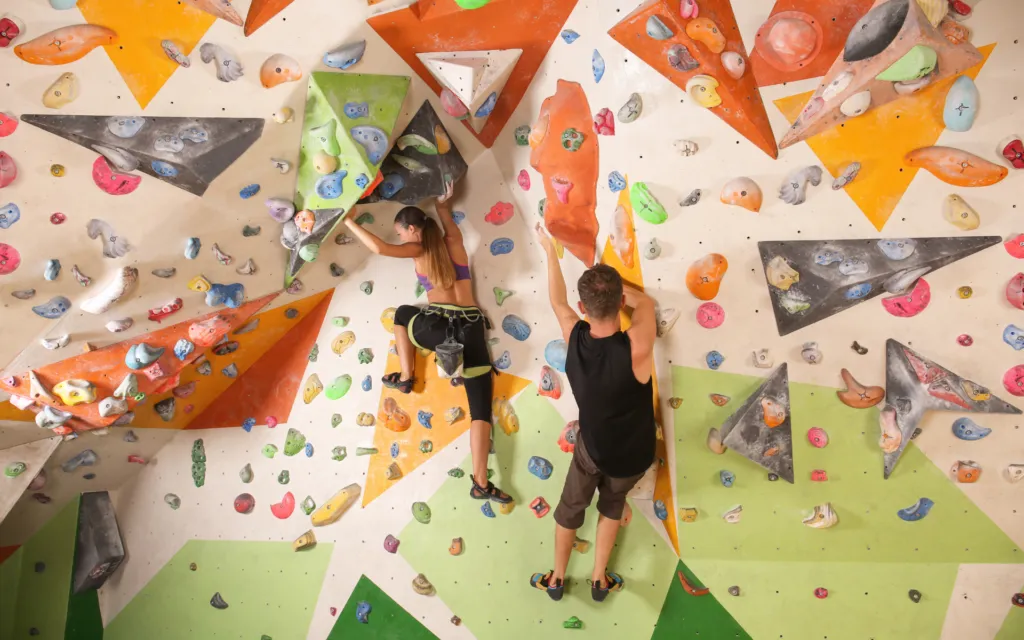How to Start Indoor Climbing at a Local Climbing Gym
Indoor climbing has become one of the most engaging and empowering ways to stay active while challenging both body and mind. It’s not just about fitness — it’s about problem-solving, balance, and confidence. Whether you’re looking to try a new sport, build strength, or simply find an enjoyable hobby, indoor climbing offers something for everyone.
Starting out might seem intimidating at first, but with the right approach, anyone can step onto the wall and fall in love with the experience. This guide walks you through everything you need to know to begin your climbing journey at your local gym and what to expect along the way.
1. What Is Indoor Climbing?
Indoor climbing is the practice of scaling artificial walls designed to mimic real rock surfaces. These walls come equipped with colorful holds arranged in routes of varying difficulty.
There are three main types of indoor climbing:
- Bouldering: Short, powerful climbs done without ropes, usually no higher than 15 feet.
- Top-Rope Climbing: You’re secured by a rope that passes through an anchor at the top, with a partner managing the belay.
- Lead Climbing: A more advanced style where you clip the rope into safety points as you ascend.
For beginners, bouldering is often the easiest entry point since it requires minimal gear and provides immediate feedback on technique and strength.
2. Why Indoor Climbing Is Worth Trying
Climbing is an incredible workout that trains your body and mind simultaneously. It builds coordination, problem-solving skills, and resilience — all while keeping you engaged and motivated.
2.1 Physical Benefits
- Full-body strength: engages your arms, core, back, and legs.
- Improved flexibility and mobility.
- Enhanced balance and body awareness.
2.2 Mental Benefits
- Encourages patience, focus, and creative thinking.
- Reduces stress by demanding full concentration.
- Boosts self-confidence with every climb completed.
2.3 Social Benefits
Climbing gyms are community-driven spaces. You’ll often meet friendly, supportive people who share a passion for adventure and personal growth.
3. Choosing the Right Gym
Finding the right environment makes a huge difference in your experience. Look for a climbing gym that feels clean, safe, and encouraging.
A great gym typically offers:
- A range of walls and route difficulties for all skill levels.
- Quality crash pads and regularly maintained equipment.
- Friendly, knowledgeable staff who guide newcomers.
- Introductory lessons to help you learn basic techniques.
- A welcoming community vibe with social events and training sessions.
For instance, a facility like salle d’escalade Vertical Bloc provides an ideal setting for beginners — blending professional instruction, creative routes, and a motivating atmosphere where climbers of all levels feel comfortable.
4. What Gear You’ll Need
The best part about indoor climbing is that you don’t need a lot of expensive equipment to start.
4.1 Essential Items
- Climbing shoes: Provide the grip and precision needed on small holds.
- Chalk: Keeps your hands dry for better grip.
- Comfortable clothes: Opt for flexible, breathable materials.
If you move into rope climbing, you’ll also need a harness and belay device, but most gyms rent these items for beginners.
5. Your First Climbing Session
Walking into your first climbing session can be exciting and a bit nerve-wracking, but you’ll quickly discover how approachable it is.
5.1 Orientation and Safety
Most gyms start new climbers with a safety briefing. Instructors will demonstrate how to fall safely in bouldering areas and explain rules for shared spaces.
5.2 Warm-Up
Warming up your arms, shoulders, and legs helps prevent injuries and improves performance.
5.3 Start Simple
Begin with easy routes marked for beginners. Focus on balance and movement rather than strength. Climb slowly and learn how to use your legs efficiently — they’re stronger than your arms!
5.4 Cool Down
Stretching after your session reduces muscle soreness and improves flexibility for your next climb.
6. Understanding Route Grades
Every climbing route has a difficulty rating, helping you track your progress.
- V0–V2: Beginner-friendly, with big holds and straightforward movement.
- V3–V5: Intermediate challenges that build technique and coordination.
- V6 and beyond: Advanced problems requiring precision and power.
Don’t worry about grades too much in the beginning. Focus on technique, not just reaching the top.
7. Building Your Skills Over Time
Progress in climbing is steady but rewarding. As you continue, you’ll learn how to read routes, improve footwork, and build endurance.
Consider joining group classes or hiring a coach to refine your movement and strategy. Regular practice — even twice a week — can lead to significant improvement in just a few months.
8. Climbing Etiquette and Safety Tips
Indoor climbing is a shared experience, and following good etiquette ensures everyone has fun and stays safe.
- Don’t walk underneath someone climbing.
- Take turns respectfully on popular routes.
- Keep crash pads clear of gear.
- Brush holds when you’re done to remove chalk buildup.
- Be supportive — the climbing community thrives on encouragement, not competition.
9. Staying Motivated
Like any new skill, consistency is key. Set achievable goals — such as completing your first overhang or mastering a new grade — and celebrate small victories along the way.
Join climbing events or meetups to stay inspired and learn from others. The more time you spend climbing, the more natural and enjoyable it becomes.
10. Conclusion
Starting indoor climbing is one of the most rewarding fitness decisions you can make. It challenges you physically and mentally, introduces you to an inspiring community, and keeps you coming back for more.
All you need is curiosity, patience, and the right environment to begin. A well-designed gym, friendly staff, and supportive climbers can turn your first hesitant steps into a lifelong passion for climbing.
So tie your shoes, chalk up your hands, and take that first leap onto the wall — your journey toward strength, confidence, and adventure starts today.

